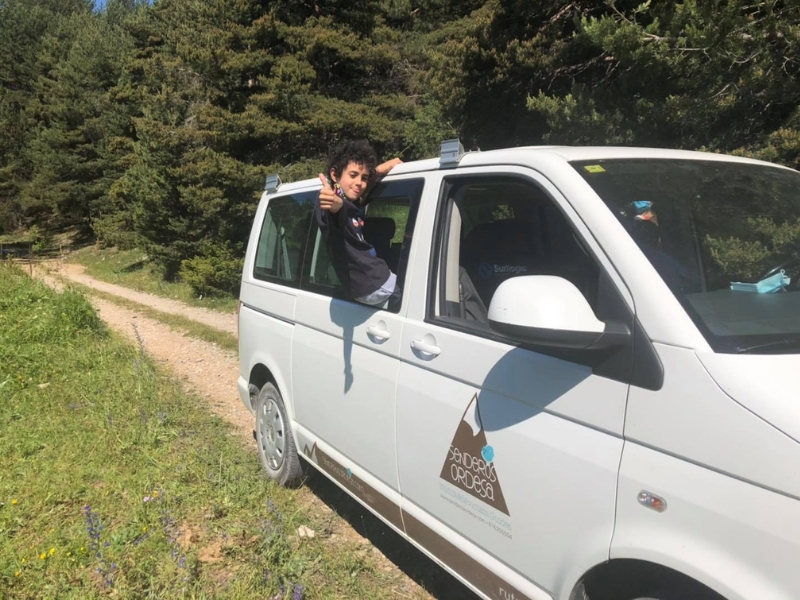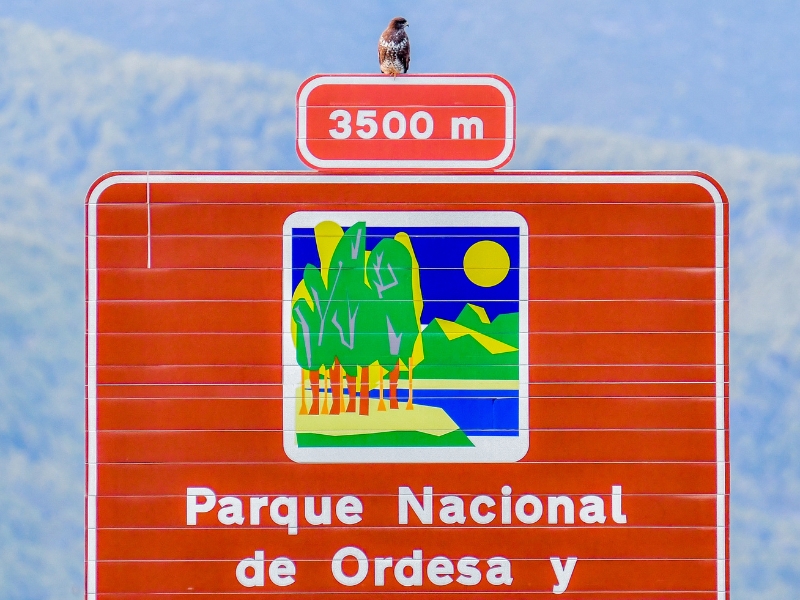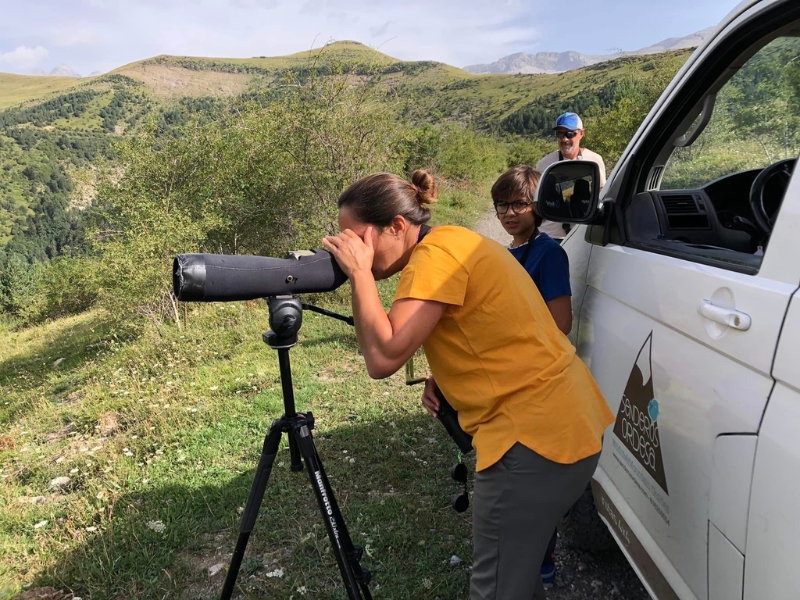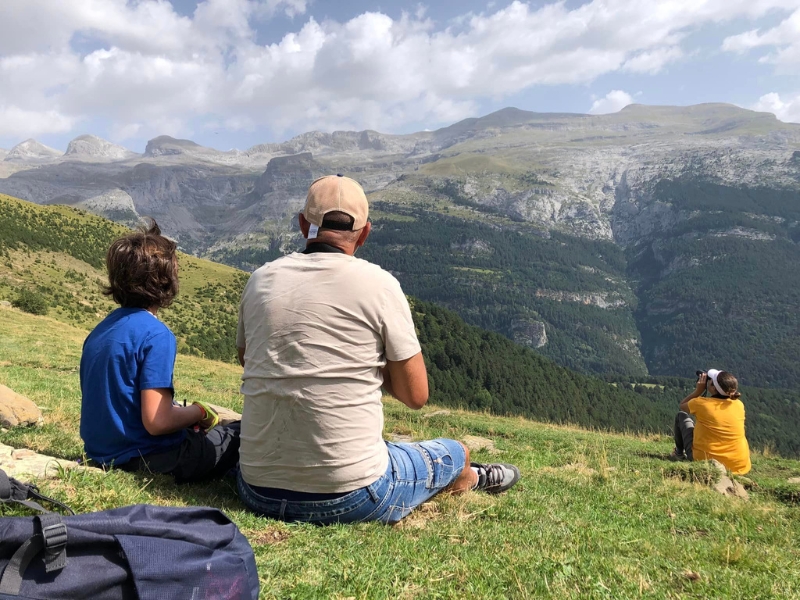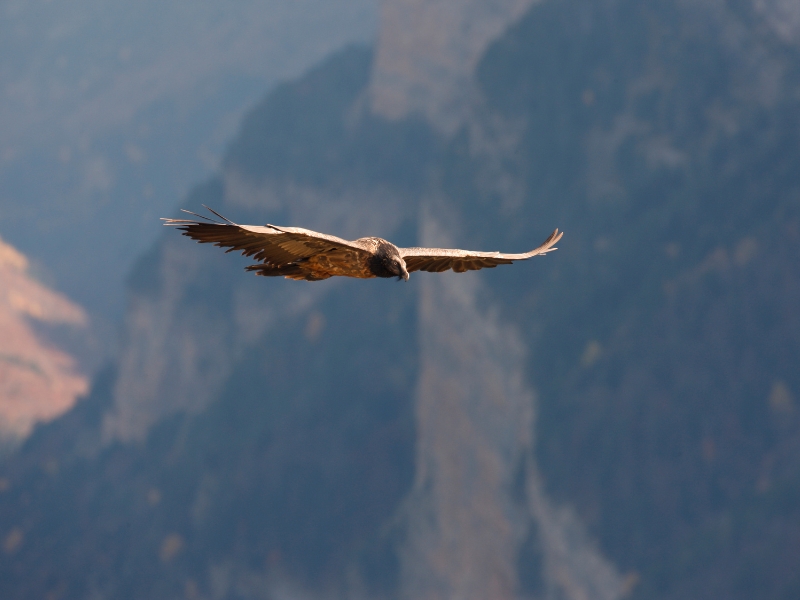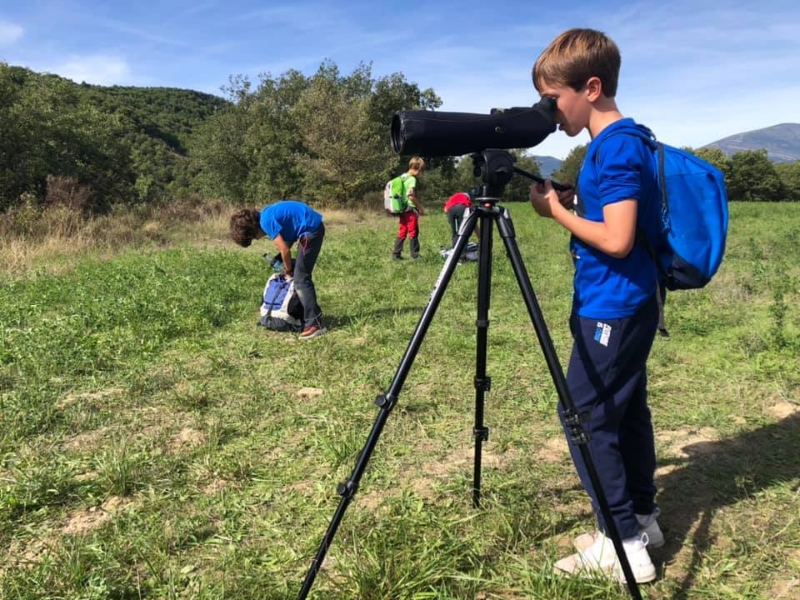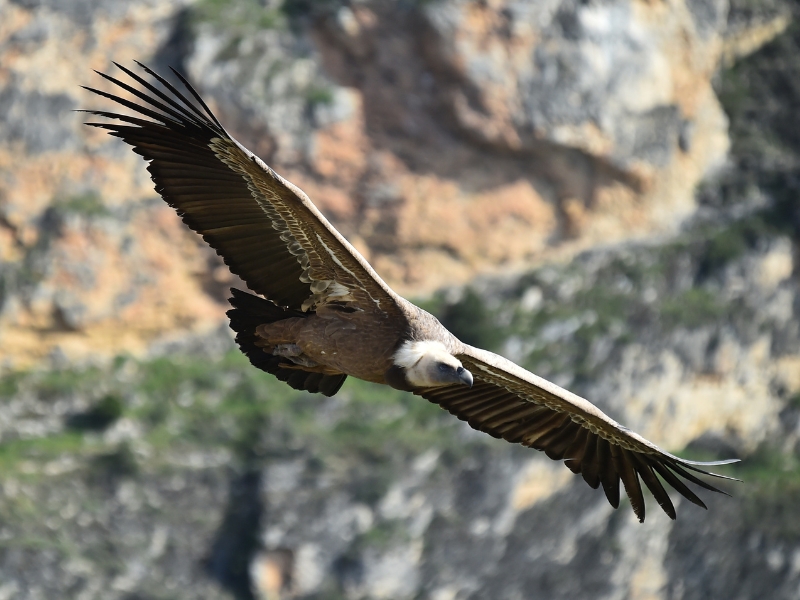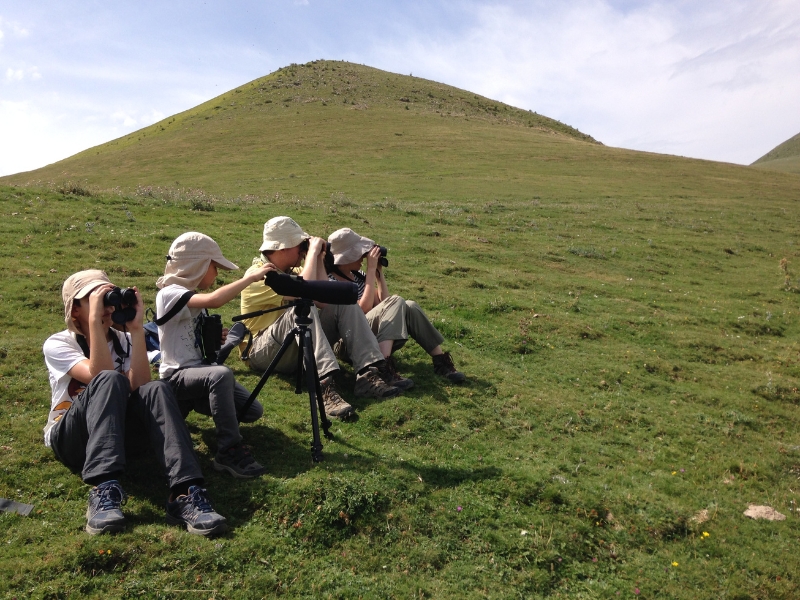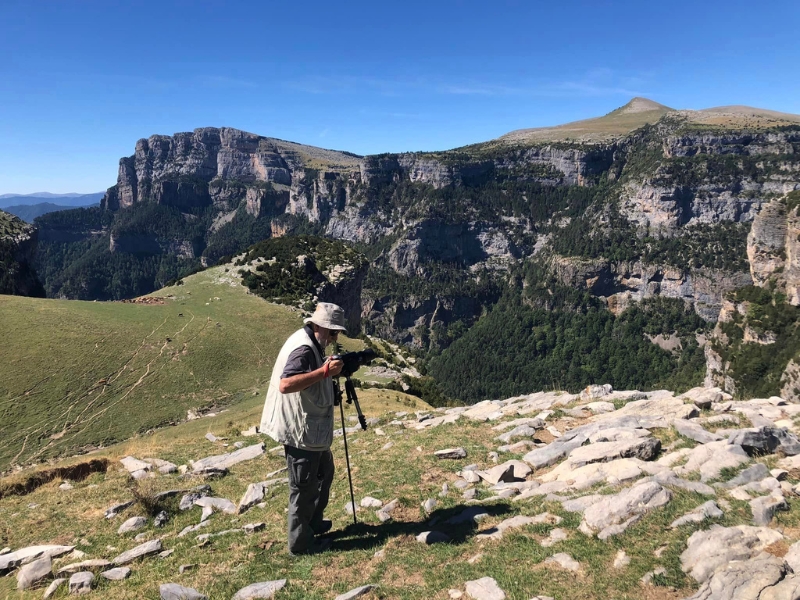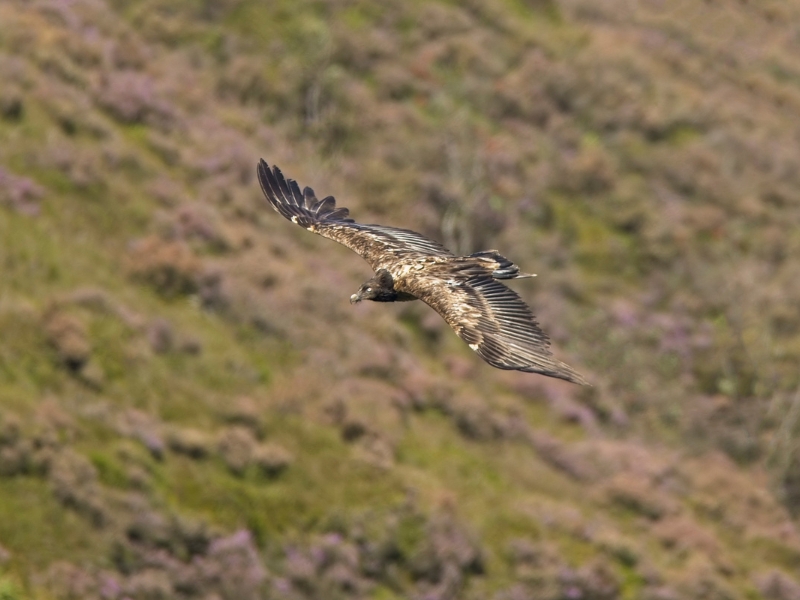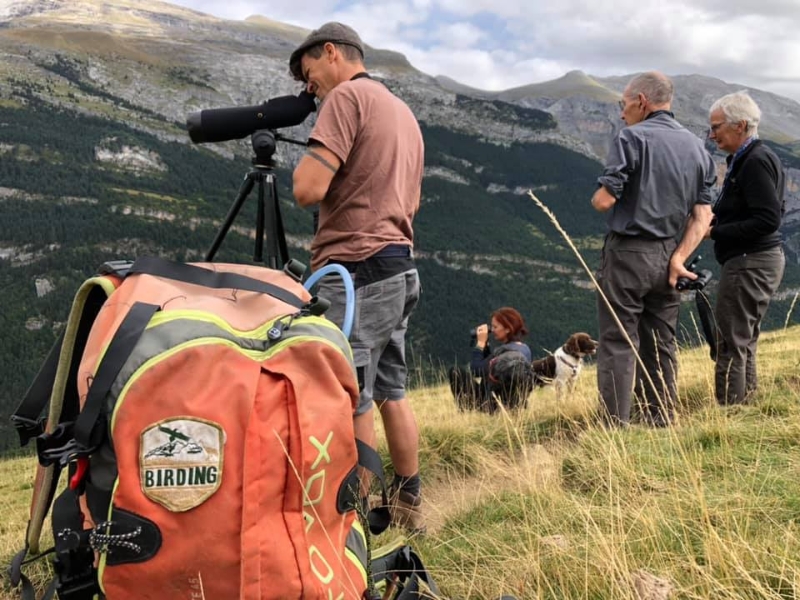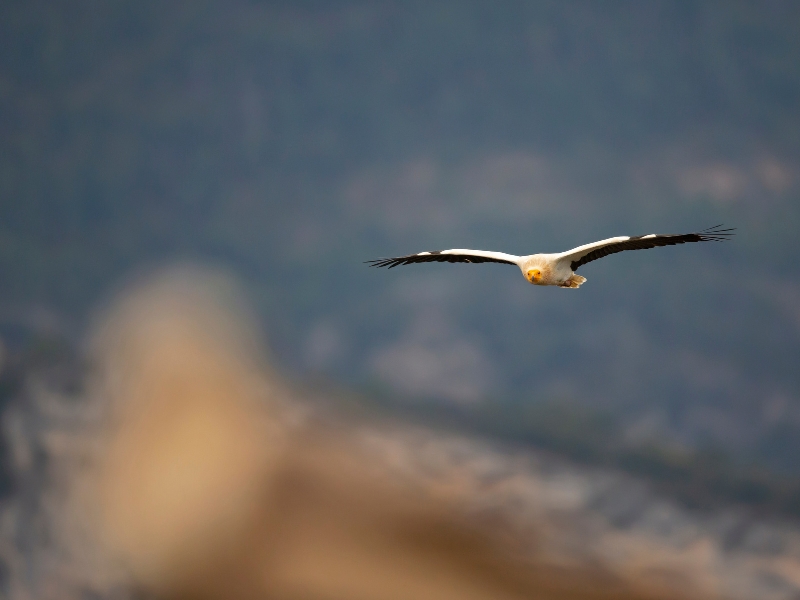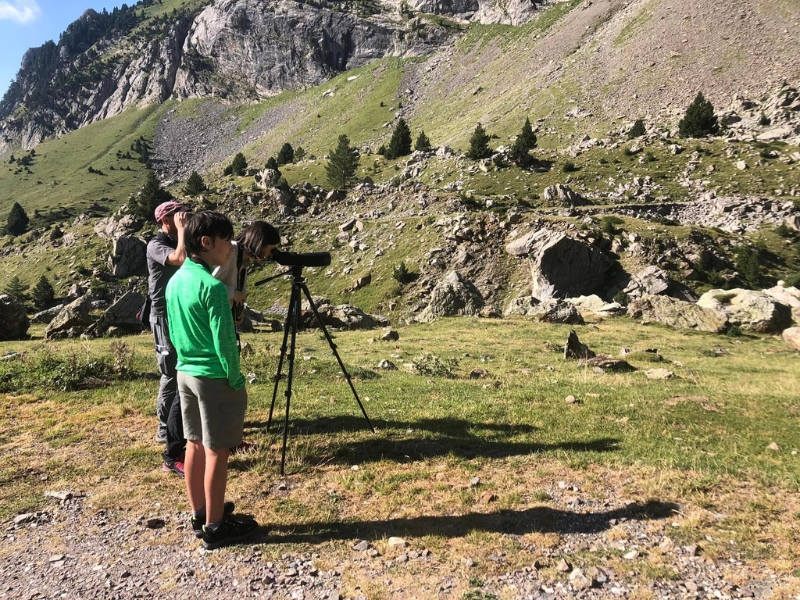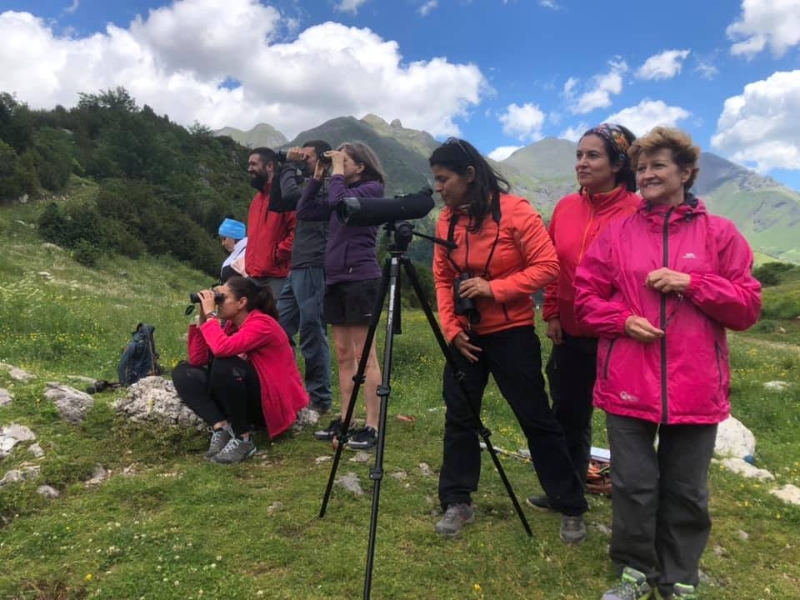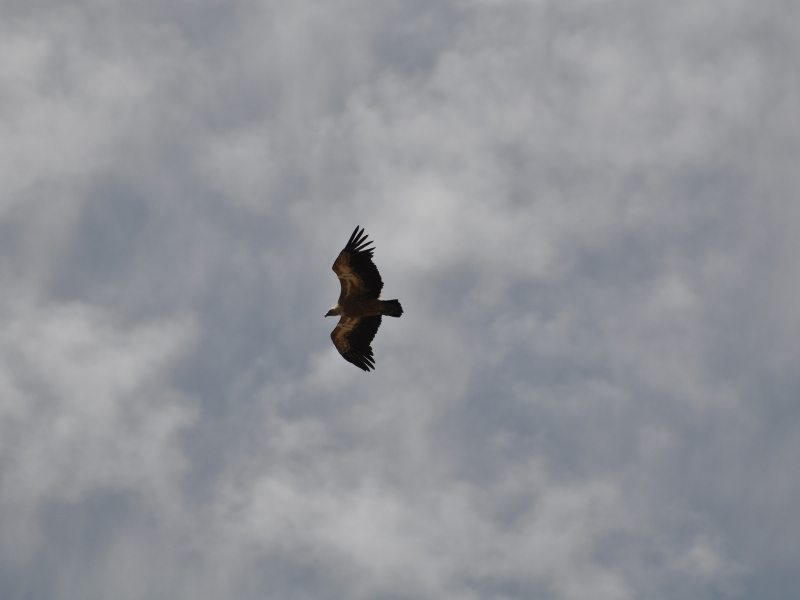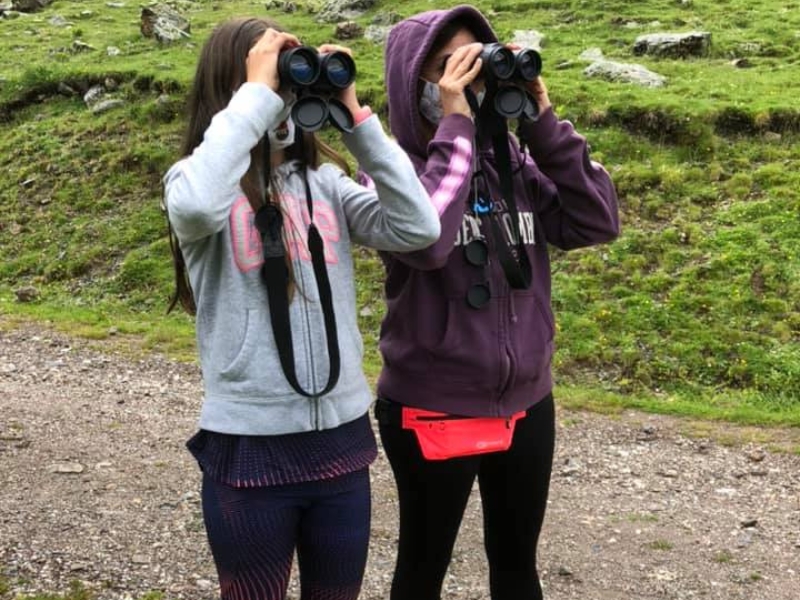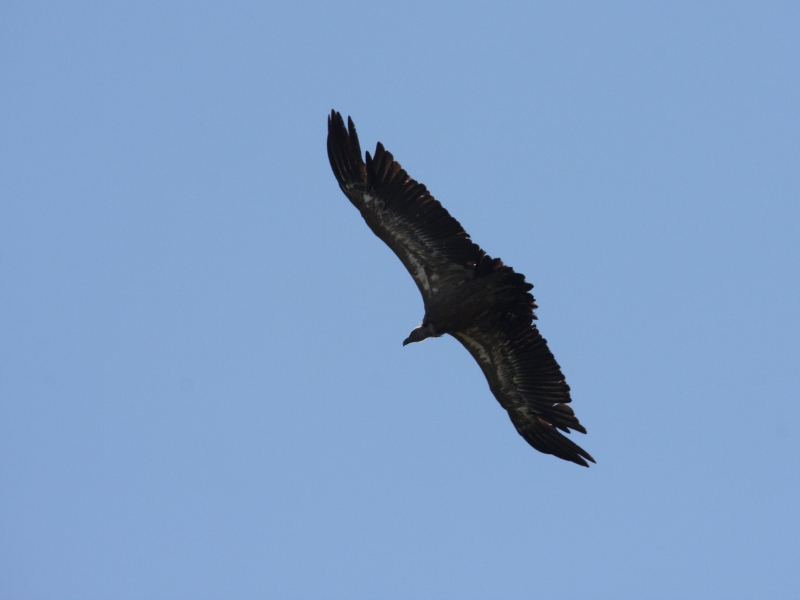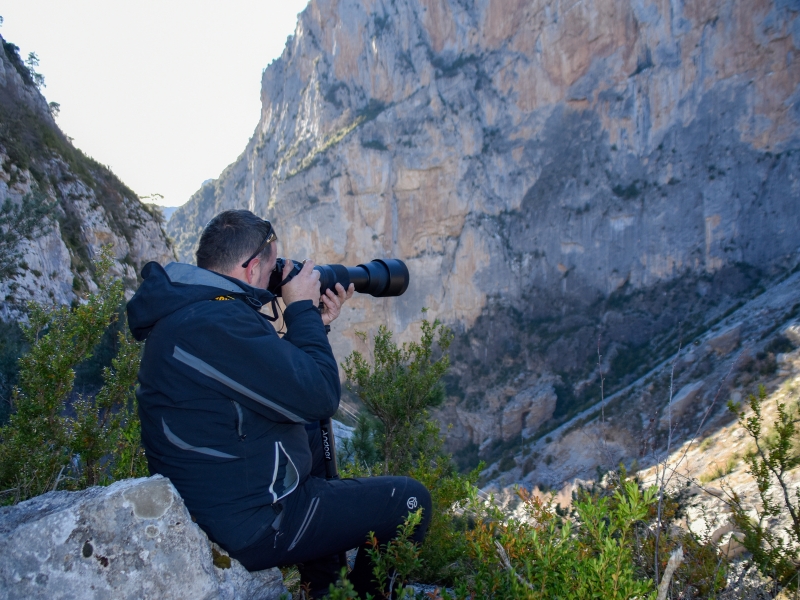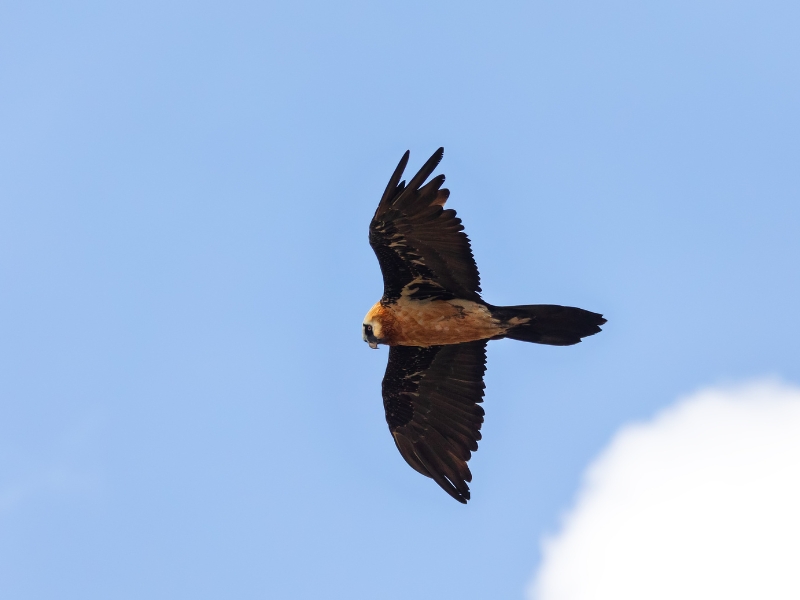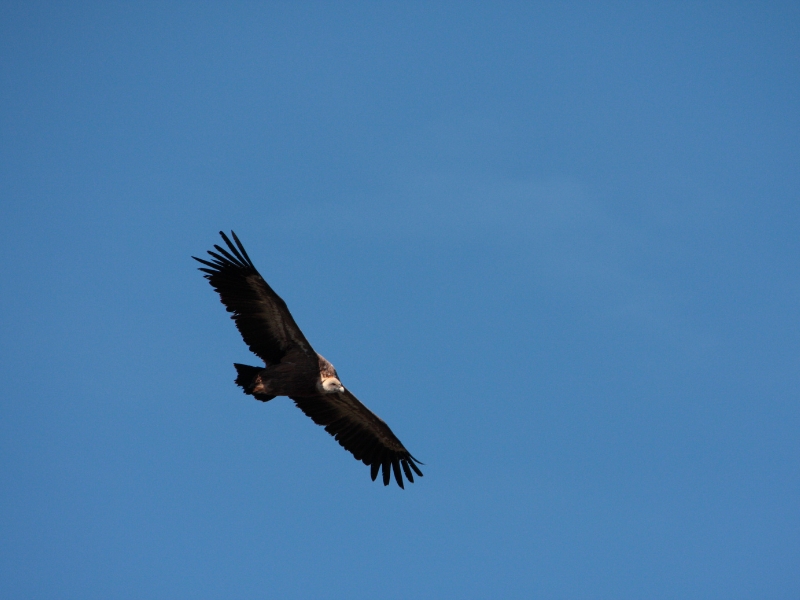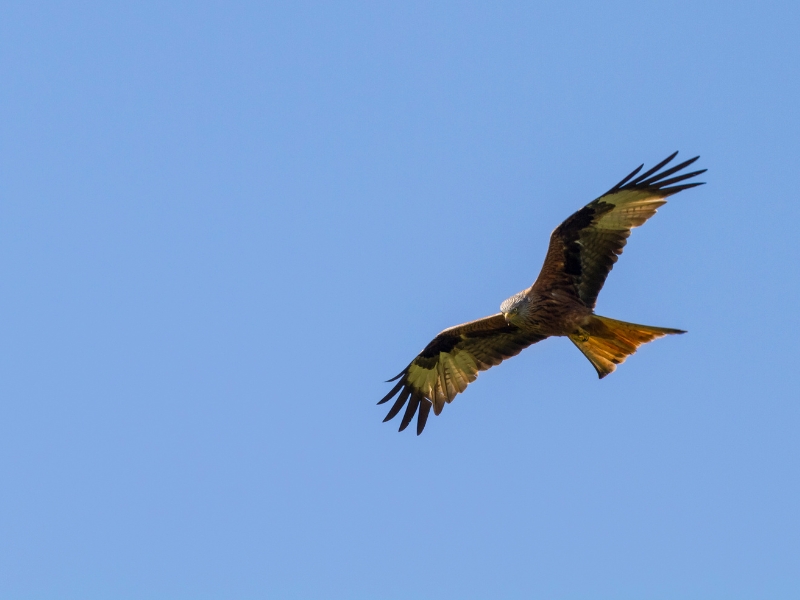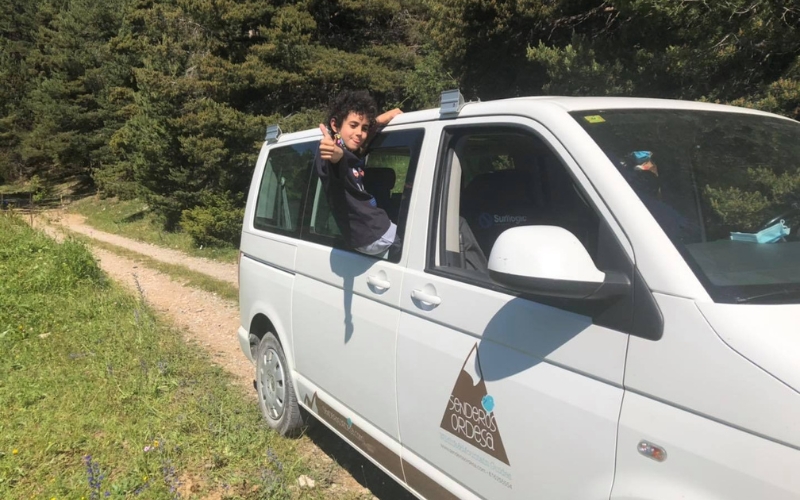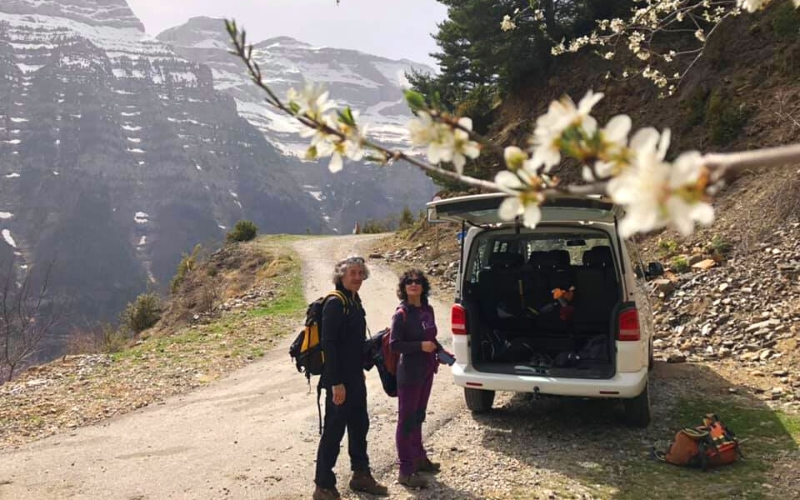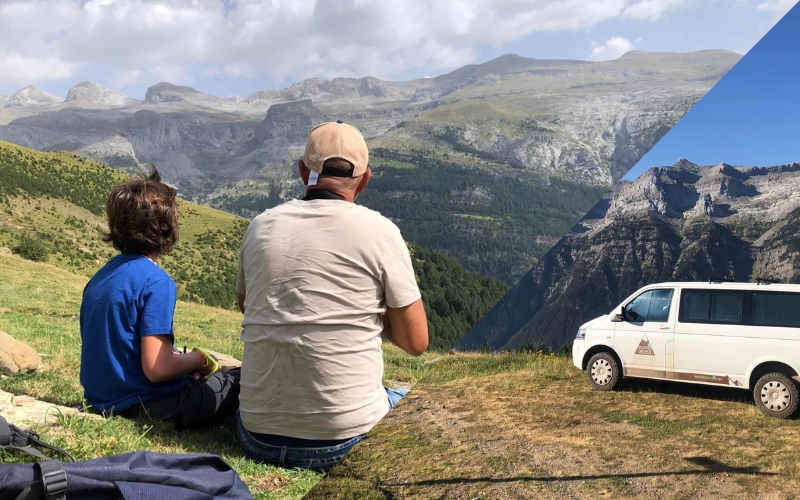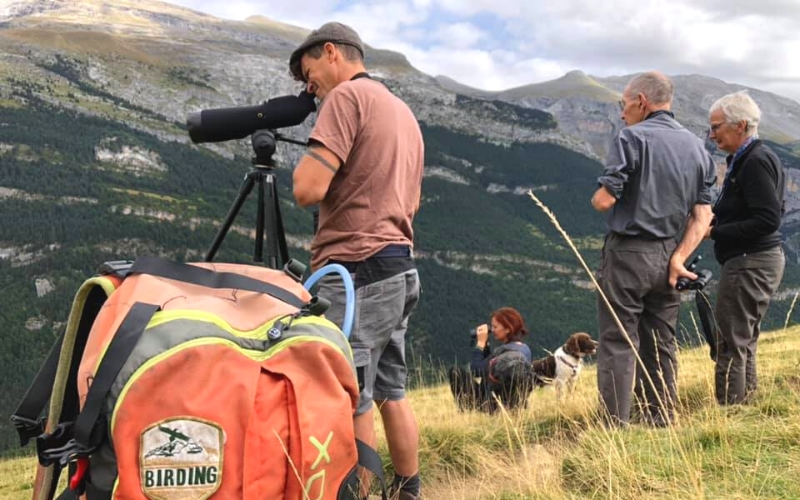BIRDS OF PREY OF THE PYRENEES
Discover the great Birds of Prey of the Pyrenees Aragonese with your specialized guide that will take you to the best locations with the greatest chances of successful sightings.
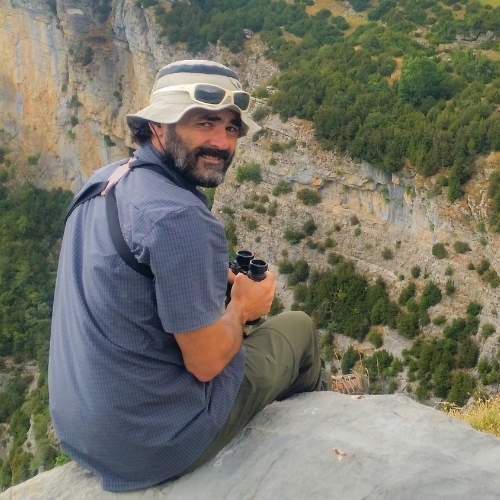

Hello! I welcome you to the Tour where you will enjoy the beautiful birds of prey of the Pyrenees. If you have any questions, you can ask me by clicking on the WhatsApp button.
Alberto Marin, birdwatching guide, former agent of the Bearded Vulture Foundation
The Pyrenees: Refuge for Birds of Prey
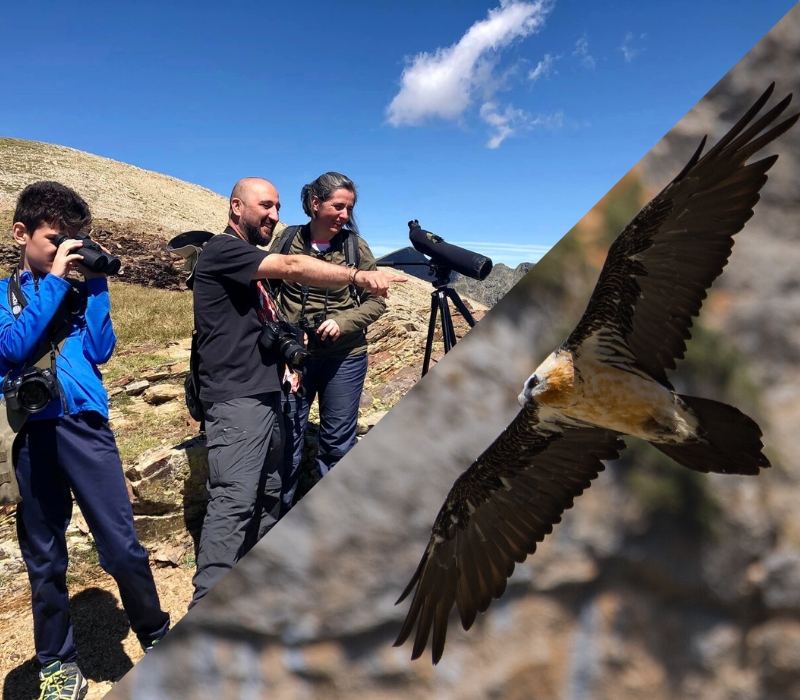
Do you feel excited to see large birds of prey flying over you? Without a doubt, a memorable nature experience. The Pyrenees is a refuge for birds of prey and scavengers (los scavangers son parte de los Birds of Prey, no?) in Spain and a key point in Europe to enjoy the flight of many species.
If you are here, I understand that you want to observe the great Golden eagle, the Bearded vulture and other birds of prey in the wild. Whether you want to comfortably reach the best observation areas or have a pleasant family experience, the Birds of Prey Tour allows you to be in the right place at the right time.
The best areas are found in high mountain points with panoramic views of the flying areas. Transport in 4 × 4 vehicle allows easy and safe access to multiple locations of great diversity so that you achieve the greatest possibilities of observation in a single day.
A luxury for bird lovers and families who want to easily visit the best spotting areas for birds of prey in the Pyrenees.
Birds of Prey Pyrenees Tour
Transportation in 4×4 vehicle is included in this experience. We pick you up to travel by the picturesque mountain tracks towards the observation points.
What does the Birds of Prey of the Pyrenees Tour include?
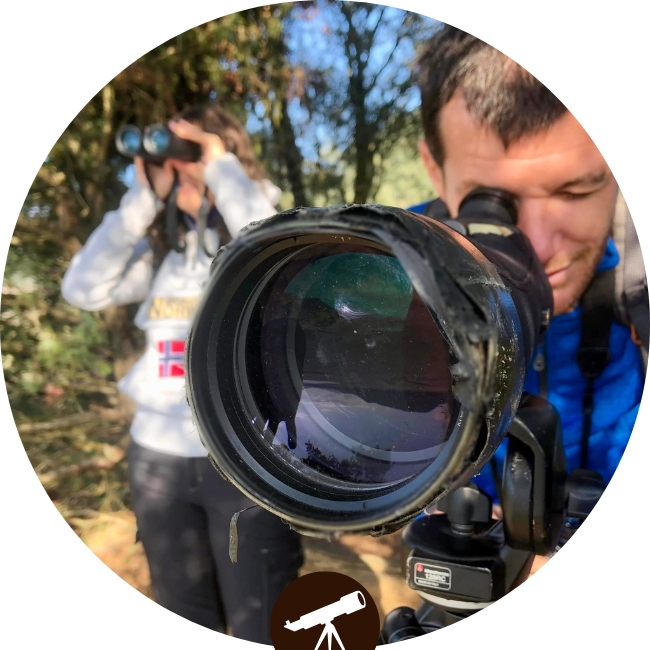
Optical Equipment
Observe the flight of the Pyrenean Birds of Prey up close with 10×42 binoculars that you have at your disposal throughout the tour. You can also observe through the telescope from the observation points.
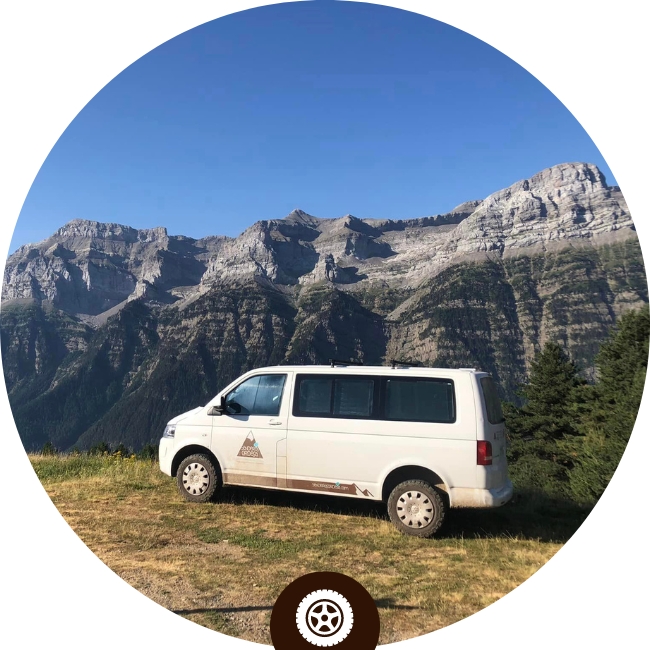
4×4 transportation
Access the best areas in the mountains comfortably in 4×4 vehicle. Pick up from your accommodation, relax and enjoy!
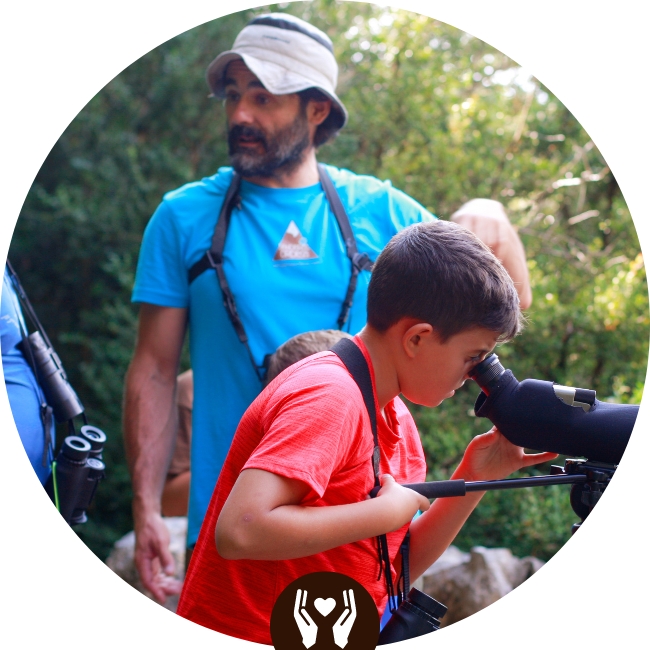
Specialized Guide
Where to go to see birds of prey with the best chances of success? Are Bearded vultures eating in the feeding grounds or flying in the valleys today? What eagle is that?!
The specialized guide of The Birds of Prey Pyrenees Tour answers these and other questions.
The Pyrenees Birds of Prey Tour is carried out in small groups (maximum 7 people) for a better experience.
Value Birds of Prey Pyrenees Tour
6/8 hours: depending on the observation conditions- Minimum 3 people. Smaller groups, check the possibilities by Whatsapp
- Optical Equipment: individual binoculars and telescope for shared use.
- Specialized Guide: Discover much more by being in the right place at the right time
- 4×4 transportation from your accommodation
- Optional Private Tours
Ask for Private Tour
What do tehy say about our birdwatching experiences?
Steps to enjoy the Birds of Prey of the Pyrenees Tour
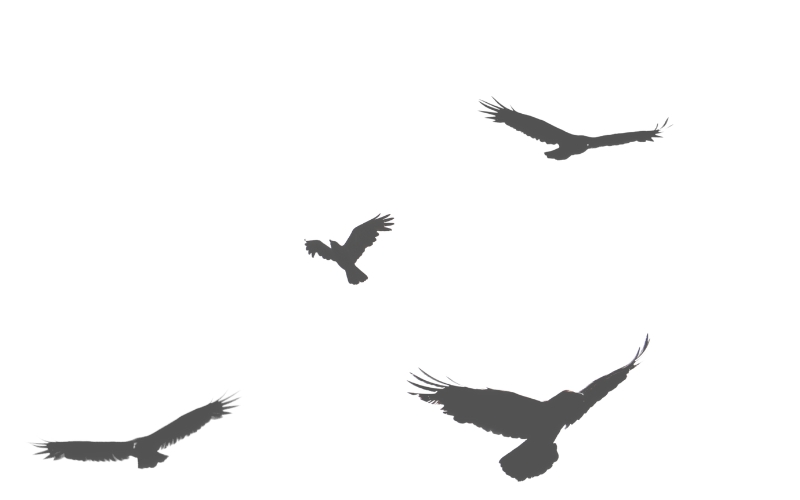
Reserve your day
Book your Birds of Prey Tour, as long as the day you want is free. From here, we agree on the time and pick up location, normally at your accommodation.
Pick up and Travel
We pick you up directly at the doors of your accommodation in a 4×4 van and the journey begins, through varied landscapes, towards the high observation areas only accessible with the appropriate vehicle.
Travelling along the mountain tracks enjoying the beautiful views is a memorable experience in itself. This picturesque journey lasts up to 45 minutes.
Observation
Now you can start using the binoculars and the telescope. The observation areas are at high points, providing a panoramic view to spot the flight of the Pyrenean birds of prey against the backdrop of the mountains.
From here we can see the great valleys, we can hear the sound of the herds in the distance and… what is that flying over? It’s time to enjoy and see what nature offers us.
Normally we will be in spots at an altitude above 1700 meters. To maximize the possibilities, we will choose one observation area or another depending on the weather conditions.
Return
After a recap of the species observed we return to the accommodation enjoying the landscape.
So far the experience to see one of the natural jewels of Aragon: The Birds of Prey Pyrenees.
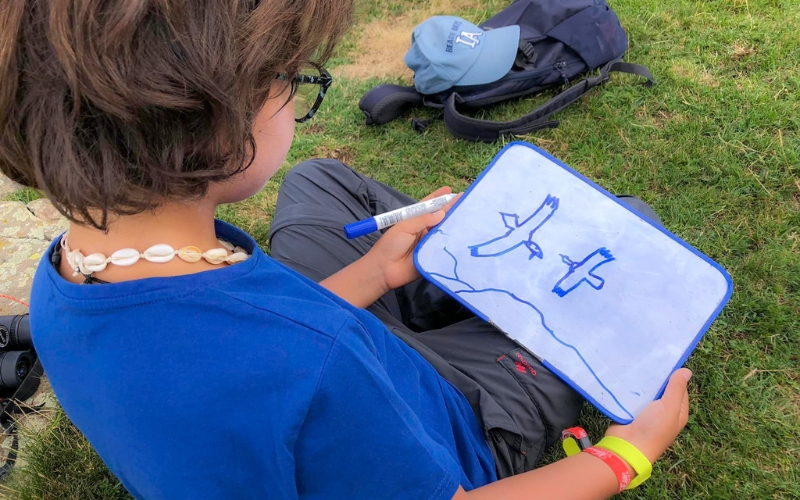
Birds of Prey spotted frequently on the Tour
Discover the birds you can see during the Birds of Prey Pyrenees Tour. They are birds that fly freely throughout the territory, so sometimes it is not possible to see them all in a single day.
The tour locations are in medium and high mountain areas with an abundance of rocky cliffs frequented by birds of prey. These places of great environmental quality offer panoramic views to spot the maximum number of birds of prey in the shortest possible time.
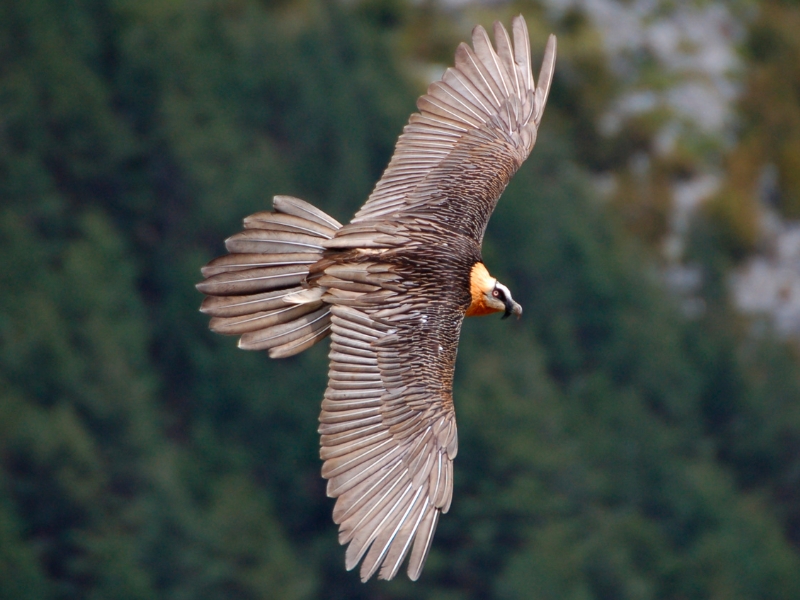
Bearded vulture
Wingspan: 260 – 290 cm
The most emblematic bird of the Pyrenees: “The eagle vulture”. Considered one of the most beautiful and impressive on the planet.
Search the sky for his diamond-shaped tail to recognize him.
Pyrenean Griffon Vulture
W: 250 – 290 cm
Another one of the largest birds that can be spotted in the Pyrenees. A quintessential scavenger, it creates an intriguing imagen by circling over a point. The Pyrenees holds various support feeding areas for vultures, guaranteeing their presence throughout the year.
How to recognize it?
Active in the middle of the day, look for its short fan-shaped tail to differentiate it.
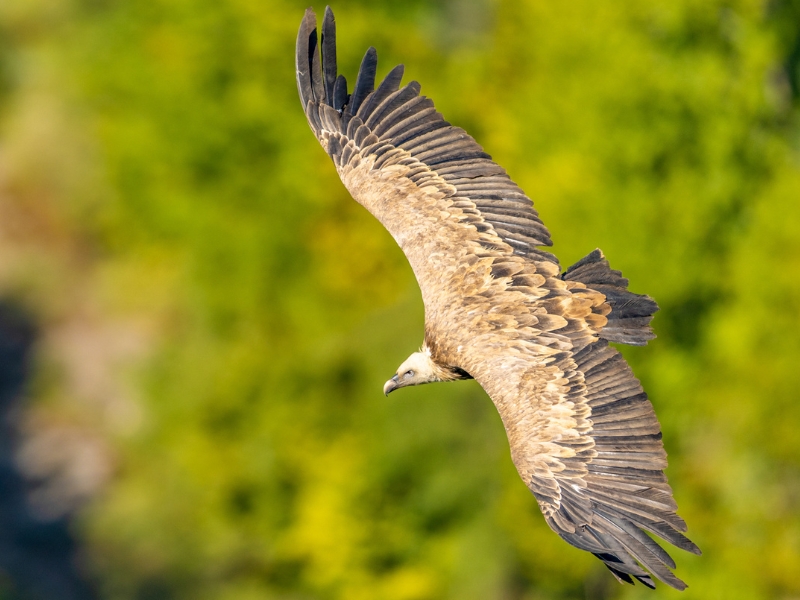
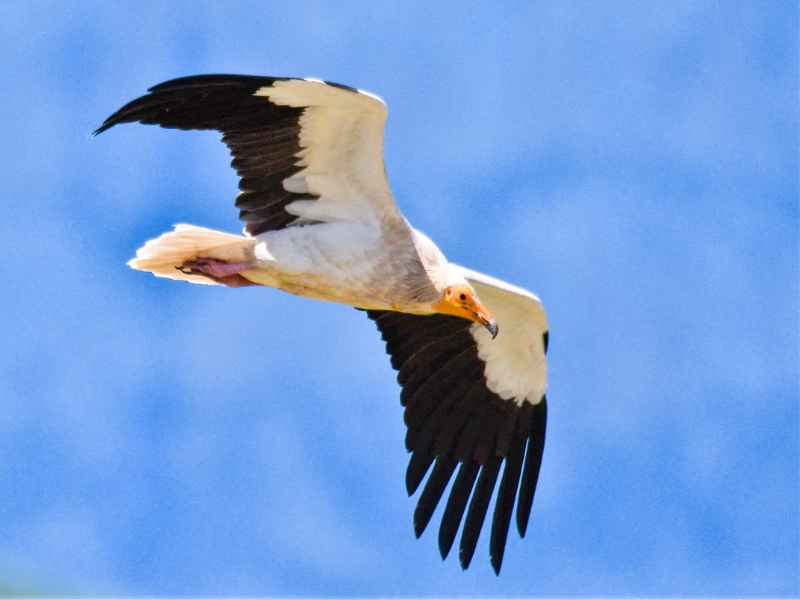
Common Egyptian Vulture
W: 150-170cm
Known as “the wise little vulture”. He is capable of using stones as a tool to crack ostrich eggs during his stays in Africa. It is a migratory raptor that comes to the Iberian Peninsula to breed every year. She dresses like a stork.
It is easily distinguished among the raptors of the Pyrenees by its orange face and diamond-shaped tail, but do not mistake it for a bearded vulture when seen from a distance!
Golden eagle
W=190-225cm
The Golden eagle can be spotted in large areas of the Pyrenees, although it is more difficult to see than scavengers. With a great sight, it can locate its prey from a distance of 3 km. The observation areas of the Tour are located in their usual home ranges.
Very difficult to observe, we will distinguish it by a rectangular and elongated tail. It usually glides with the wings well above the body.
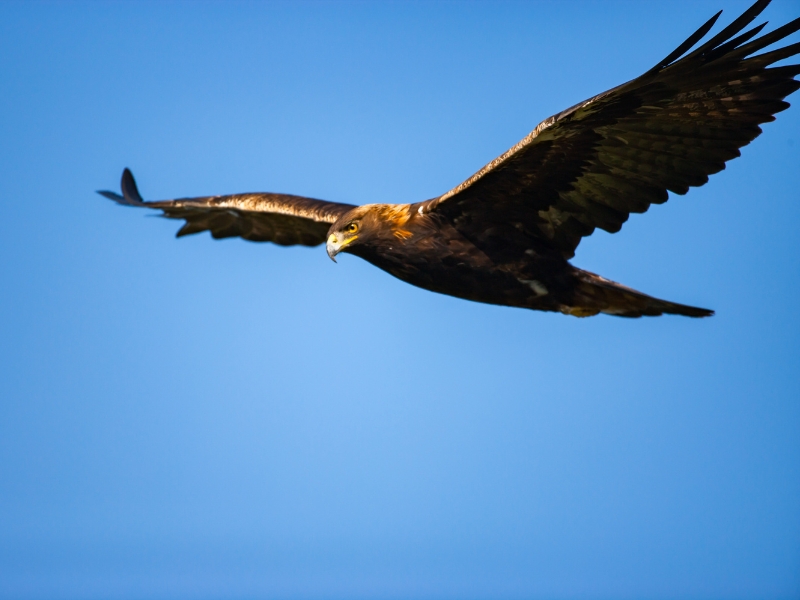
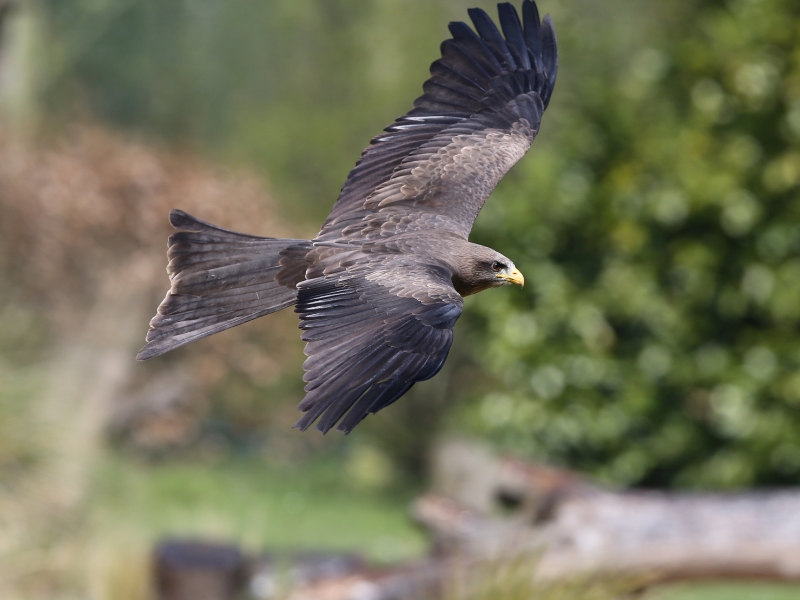
Black Kite
W=130 – 155cm
Relative of the Red Kite, with the difference of being migratory. He is known for being an air pirate: when he sees other bird of prey Pyrenees with food, he usually harasses them in mid-flight to steal it. If you are lucky enough to see this spectacle during the Tour, give thanks to Mother Nature.
You will recognize it by its sardine-shaped tail, but its pattern is less pronounced than the red kite.
Red kite
E=140 – 165 cm
Elegant bird of prey that flies over the mountain passes that cross during the Tour. Its forked tail and its reddish hue characterize this bird of prey Pyrenees. This bird is categorized as “endangered” in the Red Book of Species, but surprisingly it is very abundant in the Pyrenees.
You will recognize it by its long, sardine-shaped tail and its surprising twists.
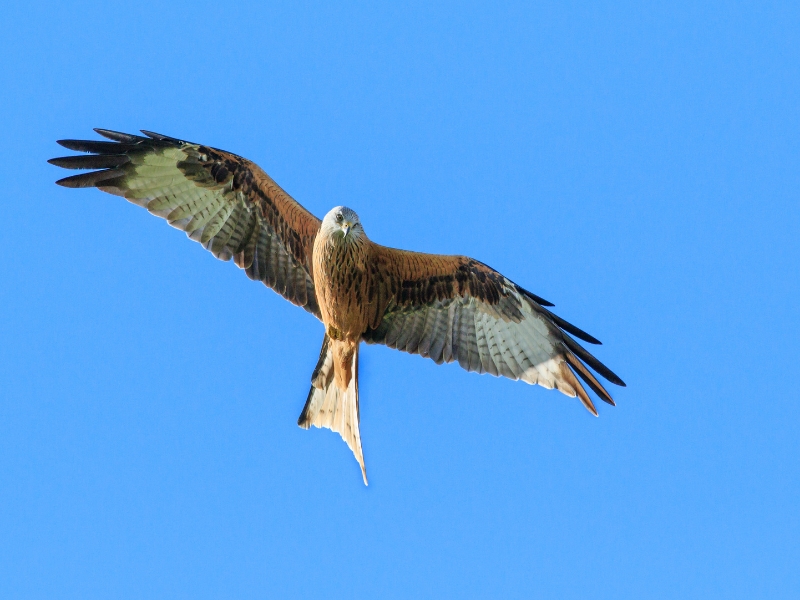
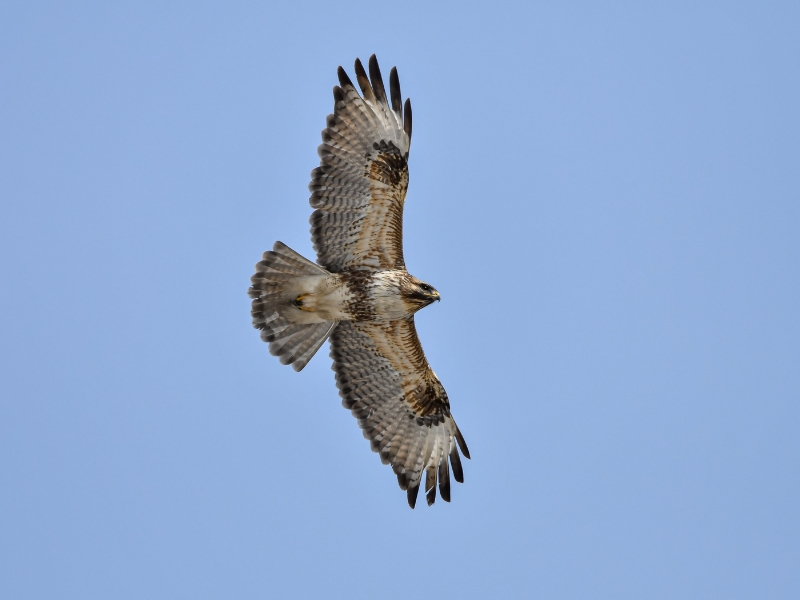
Buzzard
W= 110-132cm
Very common raptor in the Pyrenees and throughout Europe. It breeds on the edge of the forests that we will see below our high sighting spots during the Tour. Normally we will discover it perched on electricity cables and isolated poles.
Summer is the ideal time to see this raptor, since more Buzzards come from other regions of the Peninsula during spring.
If you see a bird on a post or roadside in winter, there is a 95% chance it is going to be a Buzzard. To distinguish it we usually say that “its colour is like a coffee with milk”, it has a highly variable coloration of white and brown tones.
Common Kestrel
W=68-78cm
The Kestrel is one of the most common birds of prey in the Pyrenees. It occupies from the low agricultural areas to the subalpine zone.
Therefore, there are possibilities to see it from the moment you get into the 4×4 until we take out the telescopes when we reach the observation areas. The Spanish name comes from its ability to hover, that is, to stay flying statically without moving, watching its prey.
You can distinguish it by its size similar to that of a pigeon. If you see a small bird that stays in the air without moving, it is without a doubt a kestrel.
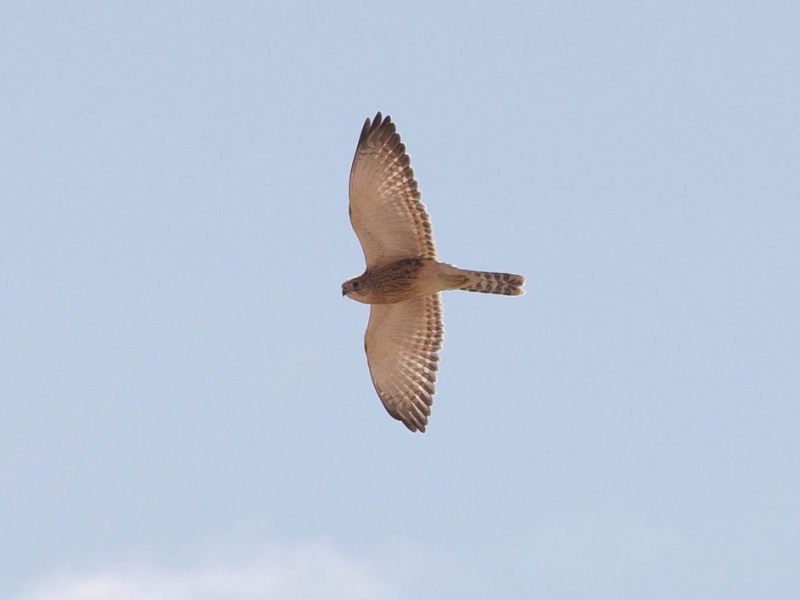
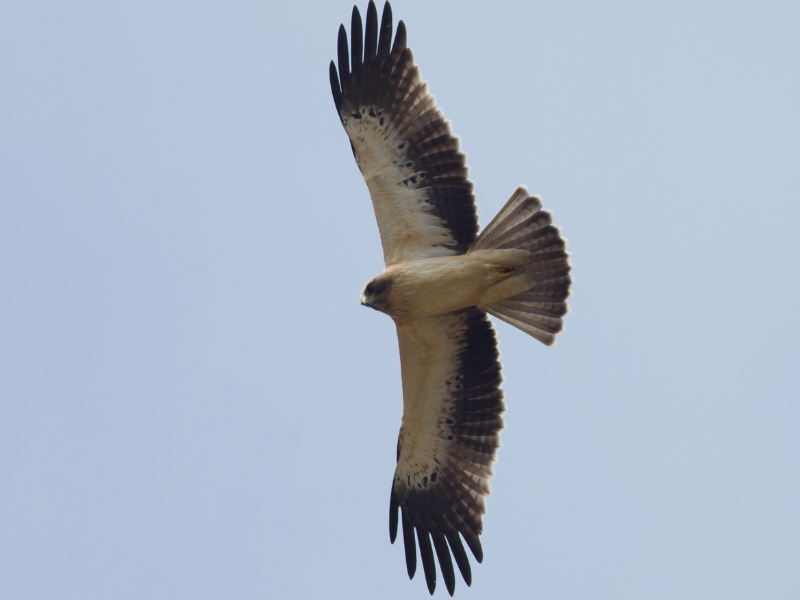
Booted eagle
W: 110-135cm
Eagle Pyrenees that surprises with its agile flight and the great dives it performs on its prey. Visible during the summer, since it spends the winter in sub-Saharan Africa. Its habitat is normally wooded areas, although it sometimes patrols supra forest areas above 2000 m.
It is a miniature Golden eagle, although 80% of the specimens present the black and white coloration that facilitates its recognition.
European Short-toed
W: 162-178cm
The eagle of the Pyrenees that feeds on snakes and reptiles preferably. So with the arrival of the cold, he has to emigrate. It nests in the forests and roams in open areas, especially during the hottest hours. This is because it is the preferred time for snakes to raise their body temperature. He spends the summer in the Pyrenees, from April to September.
It is very white in colour and has a very large head in relation to the body. Along with the Kestrel, it is the only one that performs a static flight, like that of helicopters, to look for its prey.
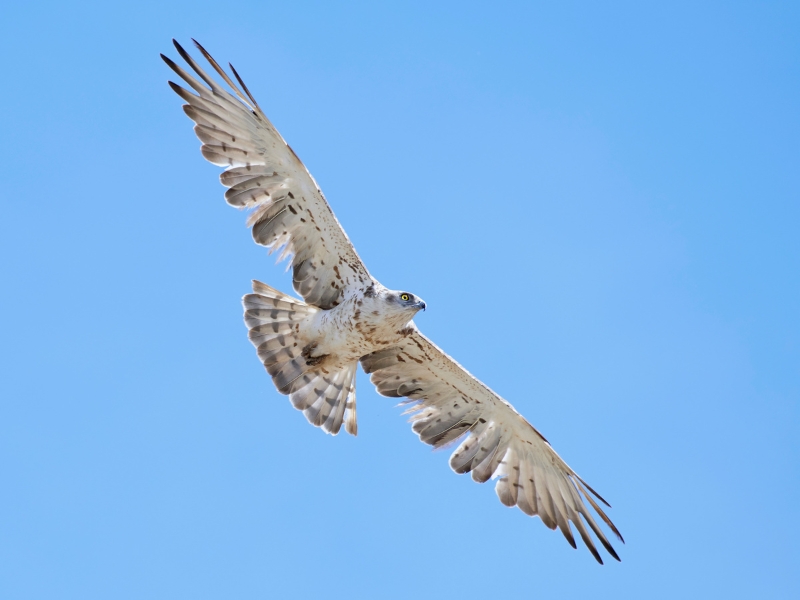
Birds of Prey occasionally observed on the Tour
The Birds of Prey Pyrenees Tour is focused on seeing the most emblematic birds of the Pyrenees. The larger raptors make higher flights and are frequent at the key mountain locations for observation we visit.
There is another group of birds of prey more linked to wooded areas or simply more scarce, and if we dedicate the Tour to their search, we would be losing the opportunity to locate ourselves in the areas most frequented by all the Raptors of the Pyrenees.
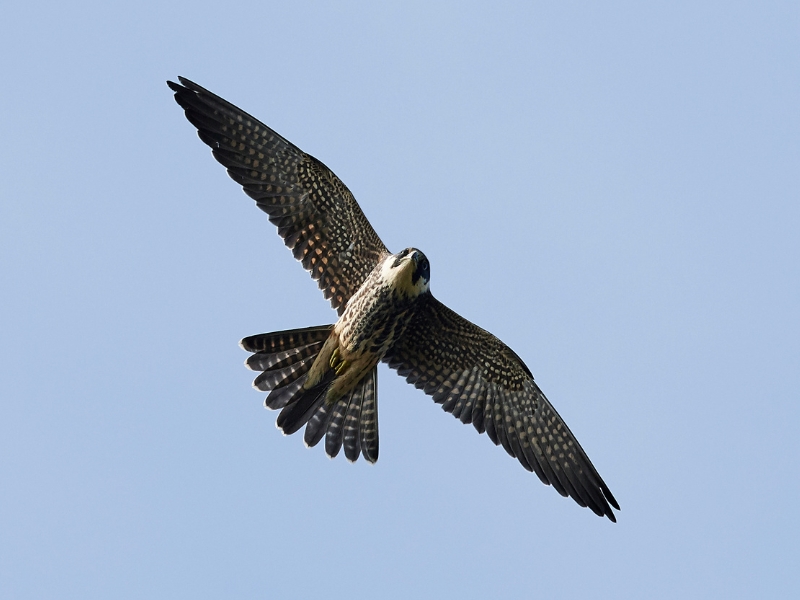
Eurasian Hobby
W: 74-83cm
Small, beautiful and elegant Falcon. It feeds on large insects (dragonflies, grasshoppers, locusts…) and small birds. It is a migratory bird that spends the winter on the African continent. During the summer, it is a visible bird of prey in the Pyrenees, although in very localized areas. Its presence is scarce in the Pyrenees, and we could look for it in a personalized tour further south.
Its observation will always be fleeting as it appears and disappears through the forest. Look for its reddish thighs as a hallmark.
Peregrine falcon
E=68- 78cm
The bird of prey pyrenees world´s fastest bird of prey in swooping hunting. It breeds up to 2,000 meters above sea level and prefers the rocky limestone walls that predominate in the observation areas of the Tour. The rugged terrain of the Pyrenees allows it to develop its lurking hunting, although it is difficult to spot since it does not frequently fly high.
It feeds on birds that captures in flight.
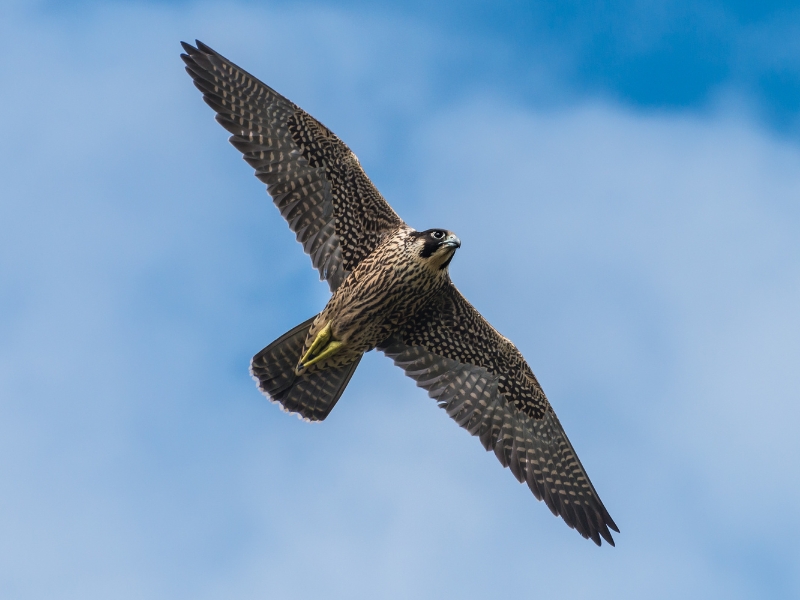
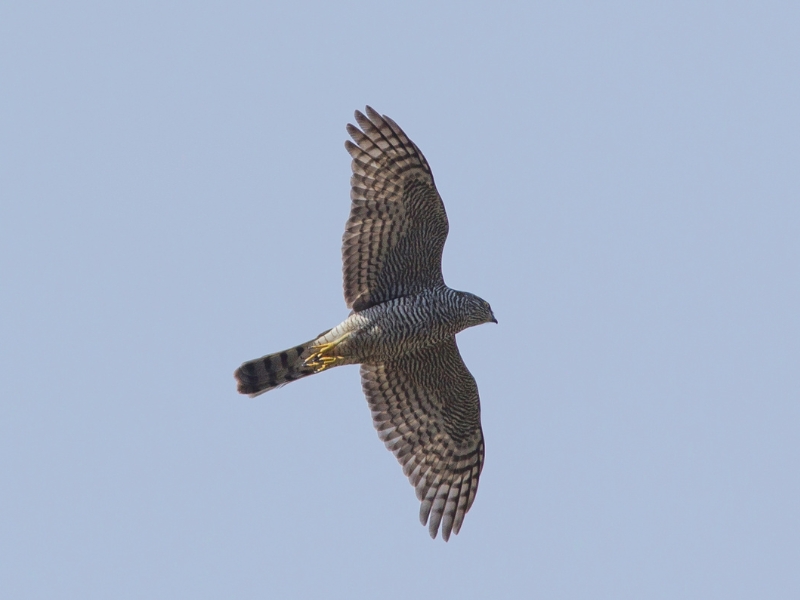
Common Sparrowhawk
E: 58-80cm
It is a master flyer in the thick of the forest. It stalks its prey and makes very fast flights through the undergrowth. Like the Peregrine Falcon, it makes very fleeting flights that make difficult the more leisurely observation that characterizes other birds of prey Pyrenees.
It has a recognizable narrow tail lined with dark bars. In their case, the female is much larger than the male.
Honey Buzzard
W: 113-135cm
Bird of prey known for feeding on wasp nests and larvae. It also hunts other birds, small mammals, and reptiles. It arrives in the Pyrenees in spring and leaves in autumn for areas in the south of the Iberian Peninsula. It usually hunts in the low areas that we see from above and has quite discreet habits.
When you’re not completely sure what you’re looking at, it’s probably a Honey Buzzard. Take care not to confuse it with a Buzzard.
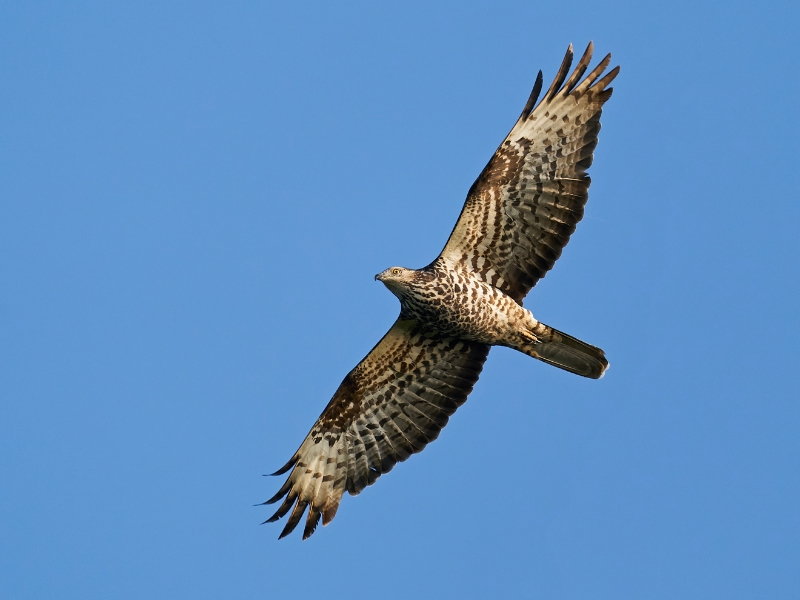

Common Goshawk
E: 90-120 cm
The bird of prey Pyrenees that was formerly used in falconry (form of hunting using a raptor). It preys on all kinds of animals, from hares to other birds. In the Pyrenees it is a resident bird and breeds every year. However, it is difficult to see during the Tour, due to its highly discreet habits.
You can look at the slopes of the valleys at the edge of the forest and, even if it is there, it will go completely unnoticed.
It has relatively short, rounded and wide wings with a very long tail, which help it to improve manoeuvrability in the thick areas of the forest where it hunts.
Club Birding Aragón
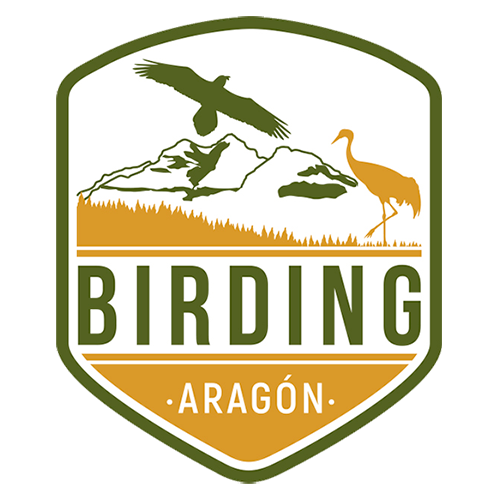
Aragón Birding Club guarantees that the birdwatching Birds of Prey Pyrenees Tour experience offered under this brand meet an standardized quality standard.
Always look for this logo if you choose another Birdwatching Tour operator in Aragón. If you have decided to give us your confidence but want to discuss any details, we are available for your questions right now.
Do you have any doubts?
Send a message to me now by whatsapp

